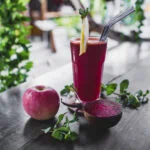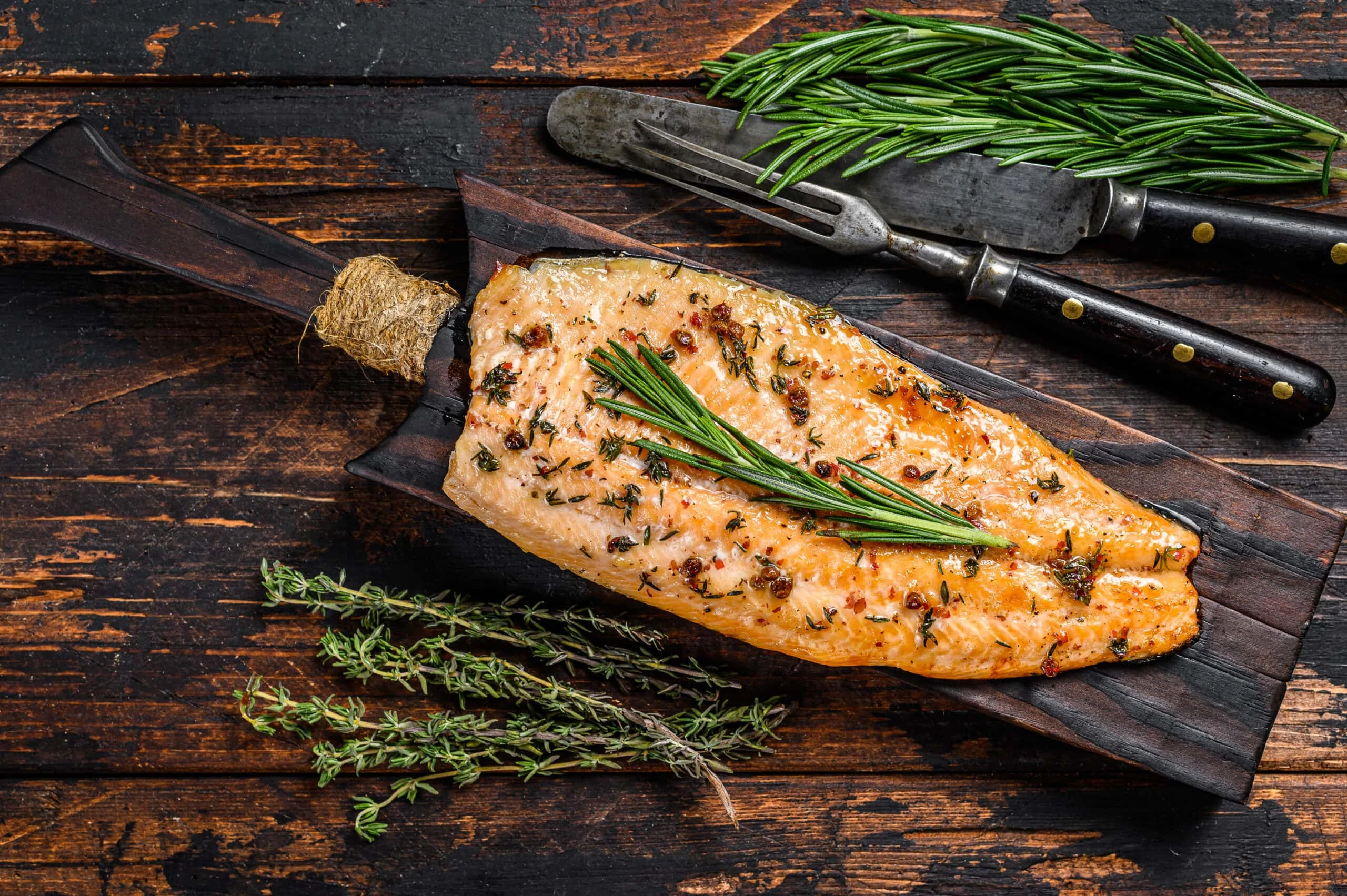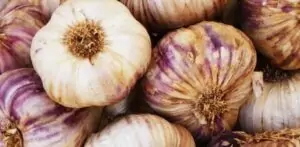Turmeric is one of my favorite spices, but I’ve been having trouble balancing its lovely color and pungent bitterness. I did some research on this ginger family herb and dug out some recipes for best kitchen uses, and how to capture its flavor profile and beauty while avoiding the strong bitter aftertaste it has.
What is Turmeric?
Turmeric is a flavorful spice that comes from the rhizome of an Asian plant in the ginger family. It looks a lot like ginger too, but with an intense yellow color.
Turmeric is technically a rhizome, which is a stem that grows underground horizontally and sends out shoots and roots.
The lush, green turmeric plant has large leaves that flatten the ends of three-foot-high stalks. Tall red, pink or white funnel-shaped flowers blossom from the stalks.
The turmeric plant grows best in wet, frost-free forests. It requires eight to 10 months from its planted date until its rhizomes are ready for harvest.
How is Turmeric Sold?
Turmeric is sold both as a cooking spice and as a supplement. As a spice, it is often sold in a powdered form in spice jars. It can also be found in its fresh root form.
Turmeric supplements focus on the purity of curcumin, including powdered in capsules and as an extract.
Health Benefits of Turmeric
Turmeric has been used in India for centuries as a medicinal product. It contains curcumin, a powerful natural compound that may have anti-inflammatory and antioxidant health benefits.
Turmeric is used as a supplement in three forms — powder, capsule, and extract. Each have different levels of bioavailability, the highest being extract. Turmeric powder is made from the dried and ground turmeric rhizome, and capsules and extracts are made from the extracted curcumin compound found in turmeric.
Several Oregon State University students show that curcumin might help prevent some types of cancer, arthritis, ulcers, and Alzheimer’s disease. Of course, turmeric’s curcumin is still under study because we really aren’t sure yet.
You might find turmeric and especially its active compound curcumin sold with black pepper. That’s because both curcumin and black pepper have powerful properties that work together to benefit health.
One downfall of curcumin is its poor bioavailability. Its many benefits are locked within the compound, preventing their absorption in the bloodstream.
But that’s where black pepper comes in. The active ingredient in black pepper, piperine, has been revealed as an anti-inflammatory property, and a helper in relieving headaches, nausea, and poor digestion. And coupled with curcumin, piperine opens the doors to both compounds so the body can reach the beneficial qualities of both herbs.
What Does Turmeric Taste Like?
Turmeric’s taste is usually described as overwhelming and pungent. It has a strong bitter, musky flavor that classifies it as earthy. It’s peppery too, similar to horseradish.
Where to Buy
Fresh turmeric can be found in the produce section of most grocery, health food, Asian and Indian stores, and its powdered form is often in the spice section of any grocery store.
Powdered turmeric is also easily available online in small jars or in bulk (if you have a lot of mouths to feed), and some products I love include instant golden milk mix and turmeric tea for happy souls.
How to Store
Fresh turmeric lasts well for two weeks if stored in a dark, cool, breathable place, or up to six months in an airtight container in the freezer.
Before storing fresh turmeric root, wash it gently and pat dry before sealing in an airtight container. If wet, too old, or exposed to too much air, turmeric may dry out, shrivel, or become moldy.
Since powdered turmeric loses its potency within six months, it should be stored in an airtight container in a dark place at room temperature and used quickly.
Cooking Substitutes for Turmeric
Turmeric is difficult to replace because of its unique flavor, but there are some spices that come close.
- Saffron makes the best color and flavor substitute for turmeric because its yellow/red color and subtle, earthy flavor match that of turmeric more than any other spice. Replace equal amounts of saffron in recipes calling for turmeric.
- Ginger offers a flavor similar to that of turmeric because they are in the same family. Replace ground turmeric with half the amount (1:1/2) of ground ginger in recipes for curries or stews that call for turmeric.
- Powdered mustard matches the spice profile of turmeric and adds a similar color. Replace turmeric with an equal quantity (ratio of 1:1) of powdered mustard. Mustard works well in recipes with cruciferous vegetables that call for turmeric, like cauliflower soup.
- Curry powder that includes turmeric can be used as a turmeric replacement in recipes that match the flavor profile of that curry powder. For example, an Indian curry powder will work well in most Indian curry recipes.
Best Ways to Cook with Turmeric
If you’ve had yellow curry, then you’ve likely had turmeric. Turmeric gives that earthy flavor and yellow color to foods, and can be pulled out as a spice by itself to jazz up mild-flavored foods like grains, root vegetables, legumes, and milks.
When cooking with turmeric, remember that fresh ginger has a brighter, less bitter, and more aromatic flavor than its powdered form.
Here’s where the bitter balance comes in — though turmeric’s bitter notes are what gives dishes that earthy sense, with just barely too much, a dish can taste musty and dull. How do you neutralize turmeric’s bitter taste?
As with any bitter flavors, counteraction is found in acidic foods rather than sweet ones. If you’ve added too much turmeric to a dish and the bitterness is off-putting, add a dash of lime or lemon juice. The acid in fruit is a great balancer to the bitterness of turmeric, and can help to bring out turmeric’s sweeter notes.
Epic Tips for Cooking with Tumeric
- Powdered ginger can be used as is, and fresh turmeric can be sliced with a knife or mandolin, or grated with a cheese or other box grater. Here are some Essential Tools for Every Kitchen that can come in handy in preparing fresh turmeric.
- Turmeric root can be grated and added to stews and soups for a light flavor and strong color. Add it in with the first liquids for the best flavor and color preservation.
- Add grated or powdered turmeric to whole grains like rice for a light flavor and strong yellow color.
- Give tofu a yellow color with a pinch of powdered turmeric. A little goes a long way!
- Make turmeric tea with sliced turmeric root by boiling fresh slices in water. Add ginger slices too for an extra zing.
- Turmeric golden milk is a delicious variation to your nighttime warmed milk, and a beautiful way to make oatmeal. Warm milk with a pinch of powdered turmeric, and experiment with more flavors by adding honey and spices such as a cinnamon stick, a few cardamom pods, and peppercorns. This can be made with dairy or non-dairy milk.
Many cuisines use turmeric, especially Middle Eastern and South Asian. It can be used in sweet and savory foods, and with meats, vegetables, grains, and legumes. If you have a way you enjoy using tumeric in your cooking, let us know! Drop us a note @KitchenRatings on twitter.











